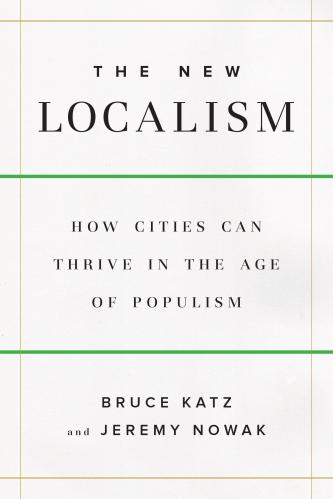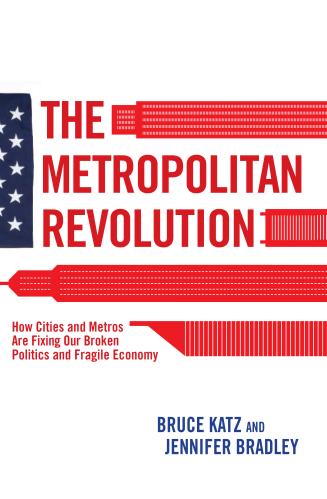New comparative papers from the Project on 21st Century City Governance aim to contribute to a road map for empowering cities
To adapt to the growing leadership demands of a world in flux, cities need a strong grasp of the fundamentals of urban governance and finance—and an understanding of how to improve them.
Since launching The Project a little more than a year ago, the world has changed in dramatic ways. Yet with power balances in flux on the international stage and populist movements disrupting national politics in Europe and the U.S., the original imperative remains.
By design or by default, cities have been shouldering more of the burden of solving the world’s problems: addressing climate change, improving economic opportunity and social mobility, integrating refugees, and more.
Our goal was to begin to unpack the fundamentals of urban governance and finance that allow cities to deliver on these demands, to sharpen the starting point for cities, and to provide more fertile ground for solutions.
By design or by default, cities have been shouldering more of the burden of solving the world’s problems
The products from the Project’s first year describe the foundations of successful governance and fiscal arrangements in Europe, highlight key institutions and tools used to drive major urban regeneration projects, and surface vital questions to guide future research and practice. The papers examine 1) the different powers that cities and city governments enjoy; 2) the disparate ways these powers affect the design, financing, and delivery of urban redevelopment projects; and 3) the institutional arrangements that are emerging to spur large-scale sustainable growth and finance modern infrastructure.
In our examination of city powers, three country-focused papers provide grounding context for ongoing devolution and regional consolidation processes underway in France, Germany, and Italy—some of the most ambitious European examples of multi-level governance shifts. Two comparative papers distill core lessons from these case studies, illustrating important similarities and divergences between devolution strategies and experiences and isolating important crosscutting themes that are relevant within Europe and beyond.
Shared challenges, differential powers
In “Promoting effective and fiscally sound local investments in infrastructure,” Teresa Ter-Minassian identifies two key challenges local governments face: institutional and capacity weaknesses and financial constraints. The interaction between these challenges illustrates how effective investment and financing policies can help bolster local capacity.
Ter-Minassian provides a list of clear recommendations for countries and cities looking to improve access to finance and the quality of local governance, and models how to inventory and assess the capacities cities need to secure sustainable financing and work effectively across other levels of government. Taking the theme of good governance and political structure further, Bernard Soulage provides a focused analysis on common devolution strategies and policies across major EU countries and distills key transferrable lessons
This research also uncovered lessons about the network arrangements that enable local governments and leaders to share best practices, pool resources, and lobby as a more powerful unit.
Designing and delivering urban redevelopment projects.
The devil is truly in the details of urban governance and finance—the mechanics that undergird every successful urban revitalization project as well as the quotidian functions of city life.
Taken together, these papers provide a more detailed, comparative backdrop for deeper dives into city- and project-specific examples of transferable institutional innovations.
A recently published paper unpacks the policies and institutional mechanisms that facilitated Copenhagen’s successful transformation of its port and harbor to drive investment in broader growth and development goals. Forthcoming case studies on Copenhagen, Lyon, Hamburg, and Helsinki will compare Copenhagen’s institutional arrangements to three other cities to identify common features that undergird successful complex growth and redevelopment projects and modern infrastructure finance.
A forthcoming paper will examine the disparate ways these powers affect the design, financing and delivery of urban redevelopment projects. These future studies will provide more granular detail on the organizational structures, financial tools, and transactions that allow cities to maximize the value and social benefits of their land and real estate assets, sustain growth, and distribute the gains more equitably.
Model institutional arrangements
While this research focuses on European countries and cities, the models have application potential far beyond Europe. For U.S. cities in particular, lessons from Europe can be useful in an era of diminished federal resources and changing demographics. The cases examined in these papers illustrate a range of different models of power and resource sharing between central, state, and local governments and the resulting impacts on the ability of cities to fund infrastructure, housing, and services.
Many cities identified local strategies to augment national government funding, including identifying transitional measures to help them adapt to new fiscal autonomy and responsibility. The European Union’s investment funds offer an interesting example of how to incentivize regional collaboration and cooperation.
The papers also outline the kinds of limitations and friction points that can alter the fundamental power structures and governance arrangements within countries.
In England and Chile, new metropolitan governance structures and new leadership roles for individuals and organizations are being created right now. The evolving experiences of Lyon, Manchester, Torino, and Santiago with governance structures in flux will be the subject of future research. A comparative analysis of their real-time efforts to grapple with institutional change can inform other cities’ attempts to gain greater powers to plan, finance, and govern core functions of metropolitan life, including housing, transport, and social services.
In its first full year of work, the Project on 21st Century City Governance has identified common challenges and promising avenues for institutional innovation and change and surfaced new lines of inquiry that should animate further urban governance studies. Even across very different country and city contexts, there are consistent fundamentals of good governance and finance as well as sound institutional design that can help cities improve how they do what they must do—build functional infrastructure, deliver quality services, and provide opportunity for their residents. We hope these papers will outline many new directions for future research on these important topics and look forward to exploring new collaborations to advance the work.











Commentary
To lead in a complex world, cities need to get back to basics
September 12, 2017